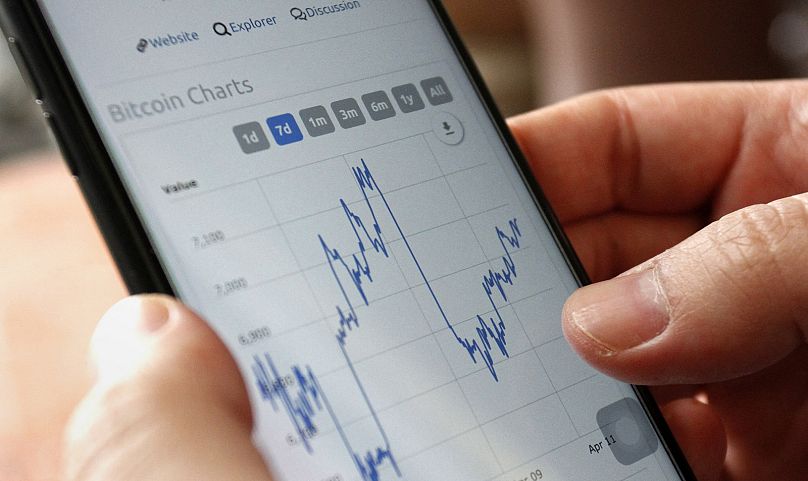We're seeing a lot of growth in the use of cryptocurrencies. What are they and how do they work?
Cryptocurrencies, or "cryptos", are being billed as the future of money. While some people see them as having limitless potential and uses, others are less than convinced.
Cryptos are not yet mainstream, but a growing number of companies and financial institutions are buying into them and their burgeoning influence around the world.
Let us help you make sense of what cryptocurrencies are and learn why they will matter in the near future.
What are cryptos?
Cryptos are just like any other currency. You can buy goods and services with them or trade with them. Where they differ from traditional paper currencies we have in our wallets is that there are no physical coins or notes - the money is completely virtual.
Units of cryptocurrency can be bought from brokers or generated through an online process called "mining" and used to make payments or store money anonymously.
While they are popularly depicted as coins similar to casino chips, the physical coin is worthless without the printed code inside it.
According to Investopedia, there were more than 4,000 cryptocurrencies in circulation at the beginning of 2021. More and more are being launched all the time.
Bitcoin, which you may have heard of, was the original cryptocurrency, and it continues to be the most widely recognised by people. Given its success at global recognition, Bitcoin has become a yardstick for all the other altcoins, or “alternative coins,” that came after it.
However, as of March 2021, Bitcoin has become only the second-largest traded crypto, having been unseated by Tether. Both currencies are the only coins to reach over $100 billion (€85 billion) in value, making them by far the most purchased and traded cryptos at the moment.
How do they work?
Let’s take Bitcoin as an example. Each coin is basically a computer file that is stored in a digital "wallet" and accessed by smartphone apps or internet-enabled devices. These files are transferable (whole or in part) from person to person via blockchain.
While not all operate in the same way, most cryptos use blockchain technology to make secure transactions.
Blockchain is the underlying cryptographic technology that makes the transfer of coins secure. Every single transfer is logged in a virtual public ledger, which is, in effect, adding blocks to a chain (hence the term "blockchain"). Each block is a record of a transaction, and with every block added, it makes it harder to counterfeit coins by copying them or transferring coins that aren’t yours.
You can buy Bitcoin or other cryptos with traditional money, i.e. bank-issued tender. You can also ask to be paid in cryptos when selling things.
How secure are they?
The more publicly recorded transactions, or blocks, that are added to the blockchain, the more secure the system is. That is not to say that cryptos are not vulnerable to cyberattacks, exit scams, theft or money laundering.
There have been noted fake coin launches, or Initial Coin Offerings (ICO), for instance.
It’s also possible to lose your wallet or delete your Bitcoins, thereby losing them forever.
Cryptocurrencies can be volatile due to speculative trading - as with trading in any commodity - so there can be risks attached to investing in them.
Are they widely used?
Much the same as gold or diamonds, cryptos are just another tradeable commodity. Many people who use cryptos prefer them to traditional currencies because they are not controlled or regulated by governments or banks, and the transactions are anonymous.
While some countries like North Macedonia and Algeria have banned the use of Bitcoin, others are more receptive to using it. The Bank of Singapore, for instance, has signalled it may replace gold with Bitcoin as its store of value.
Cryptos are not widely used by businesses or shops yet, either. But an ever-expanding list of companies are choosing to accept cryptocurrencies as legal tender, with car manufacturer Tesla and credit card company Visa both announcing in March 2021 that they would recognise them as a method of payment. At the same time, airline airBaltic also announced it was expanding its list of accepted cryptos.
Online payment service PayPal also said last October that it would allow its customers to buy and sell using Bitcoin.
Some companies such as Google and Amazon plan to issue their own cryptocurrencies for transactions involving goods and services specifically provided by them.
Are there any downsides to using cryptos?
While the benefits of cryptos are widely touted, there is an element of risk as with any tradeable commodity.
According to the website Coinopsy, there are close to 2,000 "dead coins" - cryptos that have failed, are defunct or were scams - at the time of writing. Analysts believe many of those currently being used may also collapse in time.
Why? The reasons range from poor design to ill-conceived business models for what the cryptos were to be used for.
There are often trust issues as well which affects their market stability. Coins are more likely to be more successful if there's a clear use, and strong trust in the blockchain technology underpinning it.
Some have also criticised cryptocurrencies for being environmentally unsound. The surge in their use (particularly Bitcoin) has meant growing demand for the computer hardware needed to run the technology that sustains them.
The process of mining - unlocking reward coins by validating blocks with randomly generated numbers - has also spurred the use of energy-guzzling supercomputers to do the mathematical heavy lifting.












